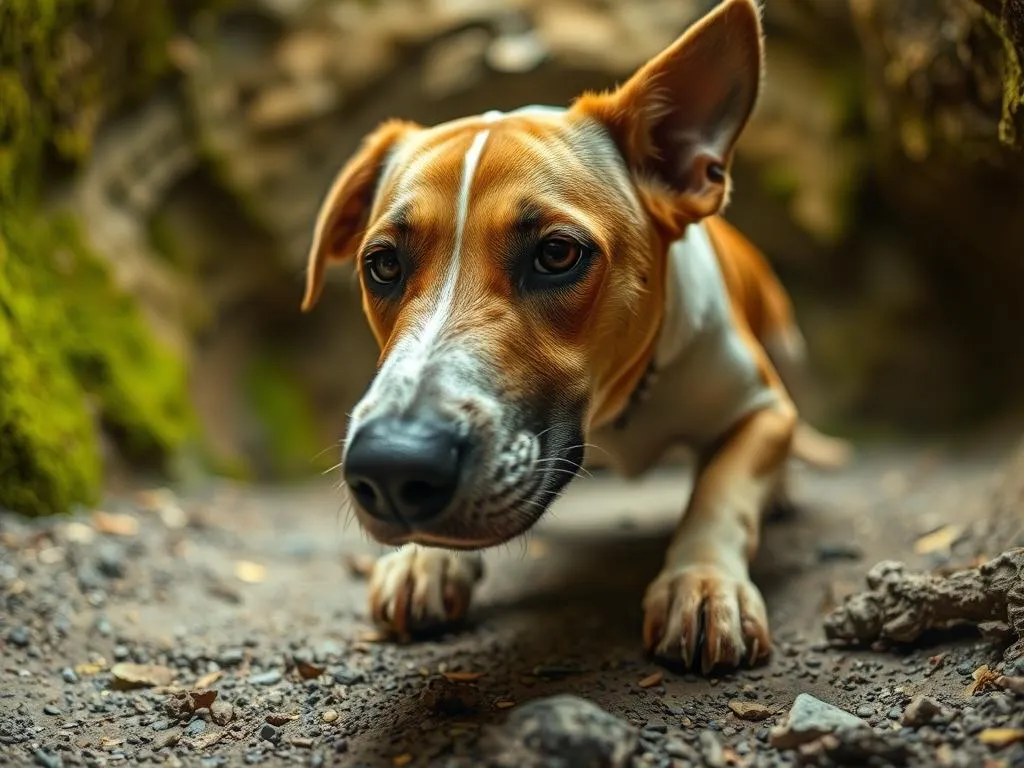
Introduction
Dog health care is a vital aspect of responsible pet ownership, encompassing everything from nutrition to exercise and mental stimulation. One fascinating area of canine health is the remarkable olfactory capabilities that dogs possess. This blog post aims to explore how far underground dogs can smell, shedding light on their extraordinary sense of smell and its implications for their health and behavior.
Dogs’ noses are not just for show; they play a crucial role in how dogs interact with the world. Understanding their scent capabilities can help us appreciate their instincts and ensure we provide the necessary care for their health and well-being.
Section 1: The Anatomy of a Dog’s Nose
Structure of the Canine Nose
The canine nose is a sophisticated organ that is structurally different from the human nose. A dog’s nose features elongated nasal passages that allow for greater air circulation and enhanced scent detection. The intricate network of turbinates within a dog’s nose increases the surface area for olfactory receptors, allowing for more efficient scent processing.
In comparison, humans have a relatively simple nasal structure, with fewer olfactory receptors and shorter nasal passages, limiting our ability to detect scents. This structural difference is why dogs are often considered the best sniffers in the animal kingdom.
Olfactory Receptors
Dogs are equipped with approximately 220 million olfactory receptors, compared to a human’s mere 5 million. This incredible difference makes dogs capable of detecting a vast array of scents, from food to pheromones, and even diseases in humans. Dogs can identify specific scents, such as those emitted by drugs, explosives, or even cancer cells, demonstrating their unique olfactory prowess.
The Role of the Jacobsen’s Organ
In addition to their olfactory receptors, dogs possess a special organ called the Jacobsen’s organ, or vomeronasal organ, located in the nasal cavity. This organ plays an essential role in detecting pheromones, which are chemical signals that convey information about other animals. The Jacobsen’s organ is particularly important for social interactions among dogs, helping them to understand their environment and communicate with other dogs.
Section 2: Canine Olfactory Abilities
The Science of Smell in Dogs
Dogs process smells using a combination of olfactory receptors and brain functions that are highly developed compared to humans. When dogs inhale, they can separate smells in a way that humans cannot, allowing them to discern different scents even in complex environments.
Factors that enhance a dog’s ability to smell include:
- Age: Younger dogs tend to have better olfactory capabilities.
- Breed: Certain breeds, like Bloodhounds and Beagles, are known for their exceptional scent detection abilities.
- Experience: Well-trained scent detection dogs often outperform their less experienced counterparts.
Distances and Depths of Scent Detection
Dogs can detect scents from remarkable distances. In ideal conditions, a dog can smell something up to several miles away. However, when it comes to underground scent detection, the capabilities vary based on environmental factors.
Real-life Applications of Scent Detection
The practical applications of a dog’s scent detection abilities are numerous and varied:
- Search and Rescue Missions: Dogs are invaluable in locating lost individuals, even in challenging terrains.
- Detection of Drugs and Explosives: Law enforcement agencies utilize dogs to sniff out illegal substances and explosives.
- Tracking Lost Pets or Wildlife: Dogs can follow scent trails left by other animals, aiding in wildlife research and pet recovery.
Section 3: How Far Underground Can a Dog Smell?
Factors Affecting Scent Detection Depth
The depth at which dogs can detect scents underground depends on several factors:
- Soil Composition and Moisture Levels: Different types of soil can either enhance or hinder a dog’s ability to smell. For instance, moist soil may carry scents better than dry, sandy soil.
- Temperature and Weather Conditions: Cooler temperatures often help scents linger longer, while heat may dissipate them more quickly.
Studies and Research Findings
While research on underground scent detection is limited, studies suggest that dogs can detect certain scents from several feet underground. Anecdotal evidence from trainers and handlers supports this claim, with many reporting that dogs can locate items buried in soil, such as food, pheromones, or even human remains, through their incredible sense of smell.
Practical Implications for Dog Owners
Understanding a dog’s behavior while they are scenting is crucial for dog owners. When dogs are sniffing around, they may be trying to identify scents of interest. It’s essential to allow them some time for this exploration, as it stimulates their minds and satisfies their natural instincts.
However, while digging or exploring, ensure that dogs are safe from harmful objects or substances that might be hidden underground.
Section 4: Health Considerations for Scent-Tracking Dogs
Common Health Issues in Working Dogs
Working dogs, particularly those trained for scent detection, can experience specific health issues that may affect their olfactory abilities. Respiratory issues, allergies, and infections can all impair a dog’s sense of smell. Regular veterinary check-ups are crucial to monitor their health and catch potential problems early.
Nutrition and Scent Work
A well-balanced diet is essential for maintaining a dog’s overall health, including their olfactory performance. Nutritional components that support scent work include:
- Omega-3 Fatty Acids: These support brain health and may enhance cognitive function.
- Antioxidants: They help reduce inflammation and support a healthy immune system.
Some dog owners may also consider supplements designed to enhance olfactory performance, but it’s essential to consult with a veterinarian before introducing any new supplements.
Mental Stimulation and Training
Mental health is just as important for working dogs as physical health. Training techniques that incorporate scent work can provide dogs with the mental stimulation they need to thrive. Activities like scent games or obedience training can enhance their ability to detect scents without causing undue stress.
Section 5: Conclusion
Understanding the remarkable olfactory capabilities of dogs offers valuable insights into their health and behavior. From the complex structure of their noses to their ability to detect scents underground, dogs are equipped with extraordinary tools that enable them to interact with the world in unique ways.
By recognizing the importance of a dog’s sense of smell, dog owners can ensure they provide the necessary care to support their canine companions’ health and well-being. Being aware of how far underground dogs can smell and the factors that influence their scent detection can lead to better training, safety measures, and overall positive experiences for both dogs and their owners.
Section 6: Additional Resources
Recommended Reading
- Books and articles focusing on dog health and scent detection can provide deeper insights and practical advice for dog owners.
Training and Care Resources
- Look for training courses that specialize in scent detection and canine health care to enhance your understanding and skills.
Community and Support
- Organizations dedicated to dog health care and scent work can offer resources and support for dog owners looking to improve their pets’ lives.
By nurturing an understanding of your dog’s unique abilities, you can foster a healthier and happier life for your furry friend.









